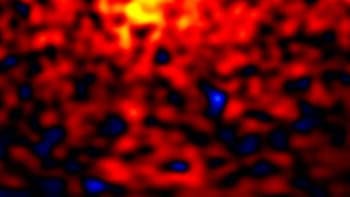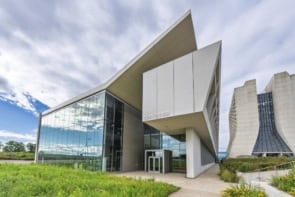There are some challenges in physics that are, quite simply, harder and more important than others.
Some will argue that the number one challenge is the search for the Higgs boson, the building of a practical quantum computer or the creation of a unified theory.
But for others, the biggest deal in physics is the search for dark matter – the invisible and so far elusive substance that is believed to make up more than 80% of the mass in the universe.
And what is particularly hard about searching for dark matter is not just that it’s invisible, but that most people looking for it spend their days hundreds of metres below ground, often in mines.
There can’t be many physicists whose job involves travelling up and down lift shafts wearing a hard hat and a day-glo jacket, before brushing the dust off, entering a clean room and then trying to coax a detector into spotting something that we’re not even sure what it might be.
But the reward for whoever makes the first definitive direct detection will be as big as it gets – a Nobel Prize for Physics is almost a nailed-on certainty.
Dark matter was first proposed in the 1930s to explain why galaxies in certain clusters move faster than should be possible if they only contained ordinary matter that we can see. Most physicists now think that this “missing mass” is some form of weakly interacting massive particle (WIMP), although its exact nature is still unknown.
Most dark-matter searches are located in deep underground laboratories because the overhead rock then shields the detectors from cosmic rays that can swamp the dark-matter signals.
But until you actually visit one of these experiments, it’s hard to appreciate the practical difficulties that are involved.
I recently travelled to the Boulby Underground Laboratory in Cleveland on the north-east coast of England for this video interview with lab manager Sean Paling from Sheffield University and the Rutherford Appleton Laboratory.
Once you get underground, the Boulby lab – home to the ZEPLIN-III and DRIFT experiments – looks like any other. But as Paling explains in our video interview, getting the equipment down there is no mean feat.
Paling and colleagues might have a hard life, but they are lucky on one front – the lab is located in a working potash mine, which means that the UK forks out just £300,000 a year on infrastructure costs for housing its dark-matter search.
Other dark-matter searches, in contrast, are located in specially built labs. The XENON-100 and DAMA experiments, for example, are at the Gran Sasso lab deep inside the Apennines in central Italy, while the Cryogenic Dark Matter Search (CDMS) is in a disused mine. The US is even planning a giant new Deep Underground Science and Engineering Laboratory (DUSEL) that will cost the US billions of dollars.
So the UK search, which has been leading the way for nearing 20 years, is great value for money. But like many areas of UK physics, the Boulby dark-matter work is currently facing turbulent financial times after a decade of healthy funding.
Paling acknowledges that times are hard, and that much effort is needed to secure funding for the future of the Boulby experiments. Let’s hope he and colleagues succeed as the search for dark matter is really starting to hot up as we reported last month.
You can find out more about the search for dark matter in this feature about the DAMA collaboration or in this feature about Boulby.
We’ve also got a second video looking more closely at the ZEPLIN-III and DRIFT experiments.
And if that’s not enough, Physics World columnist Robert Crease invites you to join him in a unique experiment in what will constitute a “discovery” in dark matter.



